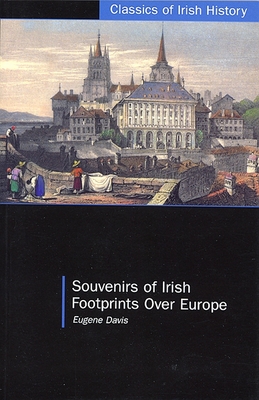Souvenirs of Irish Footprints Over Europe
Ian McKeane reviews Souvenirs of Irish Footprints Over Europe by Eugene Davis (edited and with an introduction by Owen McGee), UCD Press

HAVING LAST year reviewed and enjoyed As Others Saw Us: Cork through European eyes it now falls to me to review a Corkman's souvenirs of his travels on the European continent. This has also been a pleasure.
Born in Clonakilty in 1857, Eugene Davis travelled in Europe in the years 1885 to 1887 working as a journalist for American papers and also for the Parisian Nouvelle Revue. Fluent in French - he had been educated at colleges in Louvain and Paris - Davis might well have become one of the almost permanent Irish community in fin-de-siècle Paris.
Always a wanderer, he moved back to Dublin in pursuit of a literary career as a poet and journalist. The post of literary editor of The Nation held him there but he was dismissed in 1890. He then left for the USA where he contributed to various papers, married and was writing a novel when he died suddenly in 1897 in Brooklyn. He was just 40 years old.
Davis gives a variety of insights into the career of James Stephens and other Young Irelanders as exiles in Paris. He notes that Stephens' excellent command of French enabled him to earn a living translating Dickens for the Moniteur Universelle and move in literary circles. This is an unexpected aspect of the life of the joint founder of the Fenian movement.
Davis does not limit himself to Paris. He describes the many Irish connections with the City of Rome, including the memorial to Amelia Curran (sister of Sarah) and the grave of Fr. Luke Wadding, the Irish Franciscan, in his church of San Isidore. He tells the story of the renewal of the memorials in the Spanish Church, San Pietro in Montorio, to the Earls of Ulster O'Neill and O'Donnell.
Davis notes Irish connections in Naples and in Spain, Portugal and the Austrian Empire. However, it is his time in Paris which rewards close study.
He wrote articles for the Nouvelle Revue advocating Home Rule. He associated with some of the more 'advanced' Irish nationalists like Patrick Casey, with whom he lodged at 21 Avenue Carnot. He was on the fringes of the Pigott attempt to discredit Parnell and a close associate of that great 'chancer', General James Dyer MacAdaras, who had been attempting to create a Franco-Irish career since the late 1860s. Lack of funds and itchy feet led Davis away eventually and he finally settled in America.
His book, carefully edited (with helpful notes) by Owen McGee, gives a glimpse into the under researched world of Irish émigrés in late nineteenth-century Paris. It reminds us of the short life of this interesting individual and is a delightful and informative read.
Connolly Association, c/o RMT, Unity House, 39 Chalton Street, London, NW1 1JD
Copyright © 2007 Ian Mckeane

